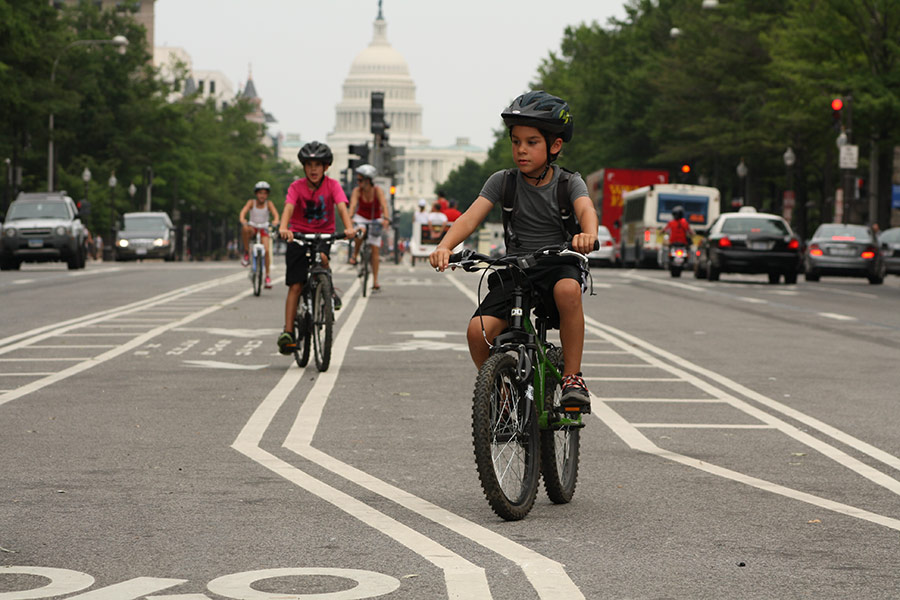
U.S. Secretary of Transportation (USDOT) Anthony Foxx knows what the nation’s mayors are up against when it comes to street safety—he used to be among them as the Mayor of Charlotte. His experience heading North Carolina’s largest city helped inform the USDOT’s Mayors’ Challenge for Safer People, Safer Streets, announced in late January and officially launched in March at a summit in the agency’s Washington, D.C. offices.
Nearly 200 cities across the country, from Boston to Santa Monica, have signed up for the challenge, which focuses on seven target areas ranging from street design to data collection to enforcement. Among the first goals of the program is coalition building. Cities that sign up put together cross-disciplinary teams to address pedestrian and cyclist safety, better equipping them to make lasting change.
“We’re looking for a prioritization of pedestrian and bike safety initiatives,” said Ryan Daniels, press secretary of USDOT’s Office of Safety, Energy, and Environment. “Bike and pedestrian safety too often falls between the cracks. Pulling together a team to focus on the problem is a key part of the challenge. Getting everyone on board is very important.”
The USDOT is not providing funding for individual cities as part of the challenge, but it is working to facilitate knowledge sharing and cooperation between top elected officials and transportation professionals across the country. “We have a lot of material and resources and research,” said Daniels. “We already know a lot about how to solve this safety problem. We want to see more of those resources in use.” Among that research is a road diet guide that informs Complete Streets design, a study on designing safe streets for seniors, and a soon-to-be-released report on multimodal intersection safety, which meshes with the program’s objectives.
As part of the challenge, mayors are encouraged to embrace a Complete Streets approach that considers all modes of transportation, from walking to cycling to transit and car use, and to study implementing a larger pedestrian and cyclist network plan. Mayors are challenged to find and eliminate barriers to road use by people of all ages and abilities, and to track biking and walking data. Additionally, the challenge calls for improving pedestrian and cycling safety laws and enforcing proper road use by all users.
The Mayors’ Challenge lasts one year, at the end of which a synopsis will be compiled summarizing the cities’ efforts.